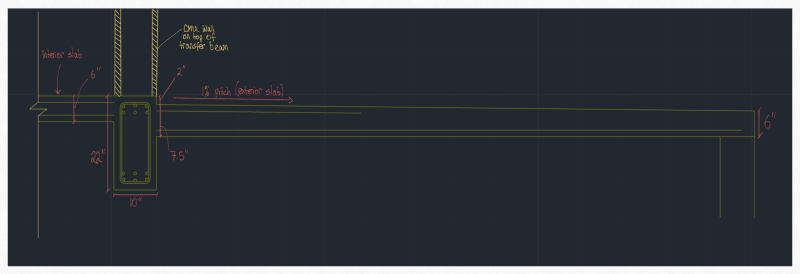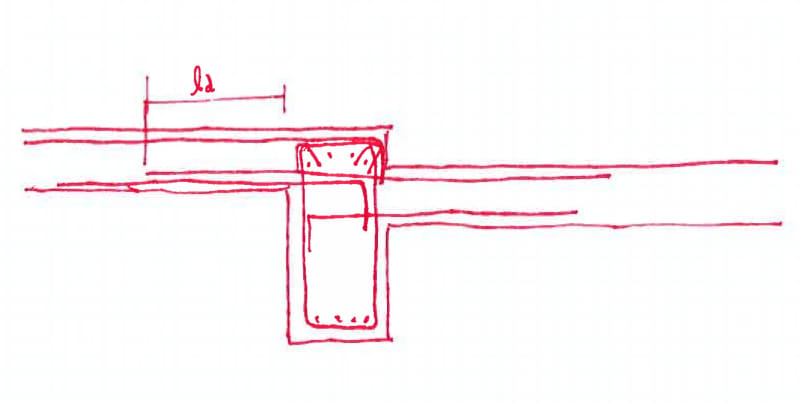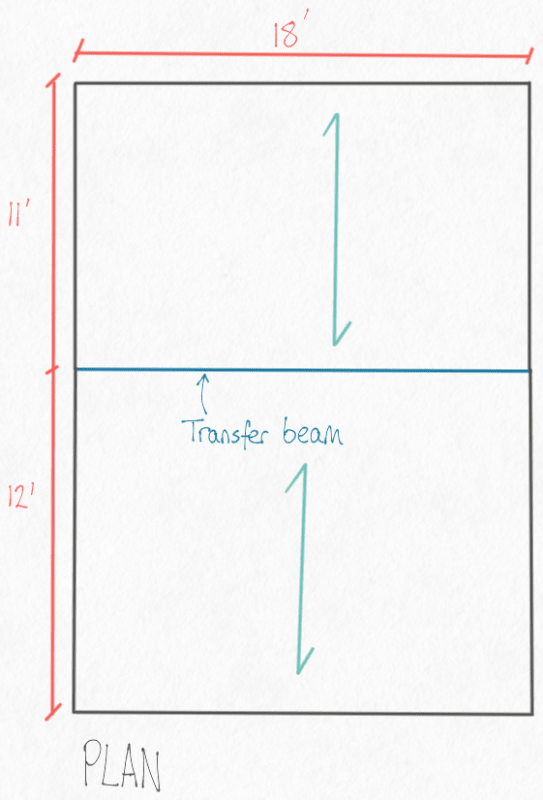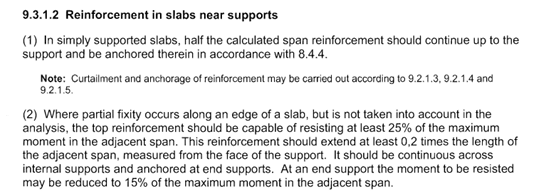psychedomination
Structural
- Jan 21, 2016
- 119
Hi there,
I'm working on a project, where I have designed a transfer beam that has slabs tying in to it at two different levels.
Dimensions are shown below :

I have a few questions.
1. Would you consider the beam to be a T beam when it has a split level of 2"? What would the cut off for when a stepped slab can and cannot be designed as a T beam? For simplicity, I designed the transfer beam as a normal rectangular beam, but I'm sure there must be some contribution from the slabs.
2. With the change in slab levels, should the slabs be designed as continuous or simply supported? What would the threshold for this be? (e.g. at a 6" step design as simply supported etc)? For context there are two slabs framing in to the transfer beam, both approximately 11' in length.
3. What would be the ideal detailing be for a situation like this?
A.

B.

Or is there a better detail that you would be able to share for this interface?
I'm working on a project, where I have designed a transfer beam that has slabs tying in to it at two different levels.
Dimensions are shown below :

I have a few questions.
1. Would you consider the beam to be a T beam when it has a split level of 2"? What would the cut off for when a stepped slab can and cannot be designed as a T beam? For simplicity, I designed the transfer beam as a normal rectangular beam, but I'm sure there must be some contribution from the slabs.
2. With the change in slab levels, should the slabs be designed as continuous or simply supported? What would the threshold for this be? (e.g. at a 6" step design as simply supported etc)? For context there are two slabs framing in to the transfer beam, both approximately 11' in length.
3. What would be the ideal detailing be for a situation like this?
A.

B.

Or is there a better detail that you would be able to share for this interface?



